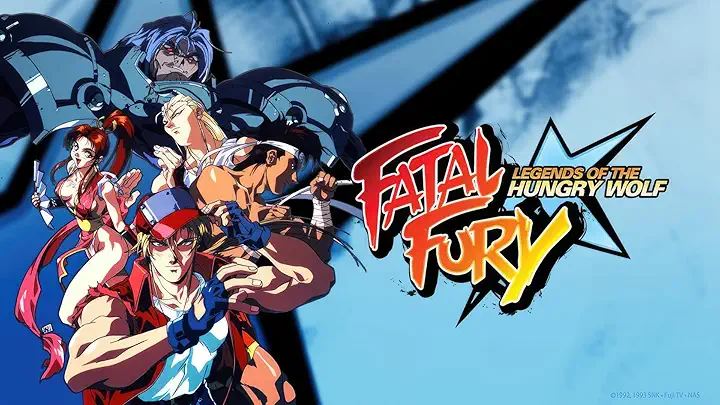Fatal Fury: A Deep Dive into SNK’s Classic Fighting Game Series
Fatal Fury (known as Garou Densetsu in Japan) is a landmark fighting game series developed by SNK. It’s a cornerstone of the 90s fighting game boom, alongside Street Fighter and Mortal Kombat, and is known for its unique mechanics, compelling characters, and dramatic storylines. Here’s a comprehensive overview:
I. History & Development
- Origins (1991): The first Fatal Fury was released in 1991 as a direct competitor to Capcom’s Street Fighter II. It was a significant step for SNK, showcasing their ability to create a compelling fighting game. It introduced the core characters and the world.
- Key Innovations: Fatal Fury distinguished itself with:
- Two-Plane Fighting: Players could switch between foreground and background planes, adding a layer of strategic depth. This allowed for dodging attacks and creating unique combo opportunities.
- Line System: Characters were positioned on a line, and movement was largely restricted to that line. This simplified movement compared to Street Fighter II but encouraged strategic spacing and timing.
- Dramatic Storytelling: SNK focused on building a narrative around the characters and their motivations, something less common in fighting games at the time.
- Evolution of the Series: The series evolved through several iterations:
- Fatal Fury 2 (1992): Improved graphics, more characters, and refined gameplay. It’s often considered a significant improvement over the original.
- Fatal Fury Special (1993): Further refinements, including the introduction of more special moves and a more balanced roster. This is a fan favorite and a crucial entry.
- Fatal Fury 3: Road to the Final Fight (1995): Introduced the “Real Bout” system, significantly altering the gameplay. It featured more dynamic movement, more complex combos, and a greater emphasis on aggressive play.
- Real Bout Fatal Fury (1996): Built upon the Fatal Fury 3 system, refining it and adding even more depth. Considered by many to be the pinnacle of the series.
- Real Bout Fatal Fury Special (1997): The final entry in the main series, adding more characters and further refining the gameplay.
- The King of Fighters (KOF) Integration: Characters from Fatal Fury became staples in the King of Fighters series, continuing their stories and expanding their roles.
- Garou: Mark of the Wolves (1999): A spiritual successor, often considered Fatal Fury 4. It featured a new engine, a new cast of characters (along with returning favorites), and a compelling storyline. It’s highly regarded for its gameplay and art style.
II. Key Characters
- Terry Bogard: The protagonist, a skilled martial artist seeking to avenge his father’s death. He’s known for his “Hungry Spirit” and “Burn Knuckle” moves. A classic fighting game hero.
- Andy Bogard: Terry’s younger brother, also a skilled martial artist. He’s more focused on speed and precision.
- Joe Higashi: A hot-blooded American martial artist and a rival to the Bogard brothers. He’s known for his powerful kicks and energetic personality.
- Geese Howard: The main antagonist of the series, a ruthless and powerful martial artist who killed Terry and Andy’s father. He’s known for his “Shunshin Kyaku” and his imposing presence.
- Mai Shiranui: A popular and iconic character known for her revealing outfit and her use of ninjutsu and fire-based attacks. She’s a fan favorite for her unique style and personality.
- Kim Kaphwan: A Korean martial artist who fights to protect his family’s honor. He’s known for his powerful kicks and his distinctive attire.
- Blue Mary: A mysterious and powerful female fighter with a tragic past.
- Rock Howard: Geese Howard’s son, and the protagonist of Garou: Mark of the Wolves. He seeks to forge his own path and overcome his father’s legacy.
III. Gameplay Mechanics
- Basic Controls: Standard fighting game controls: light punch, medium punch, heavy punch, light kick, medium kick, heavy kick, and special move inputs.
- Special Moves: Each character has a unique set of special moves, executed through specific button combinations.
- Super Special Moves (Desperation Moves): Powerful, cinematic attacks that can turn the tide of battle. These are typically activated when a character’s life bar is low.
- Line System: As mentioned earlier, characters primarily fight on a single line, influencing movement and spacing.
- Plane Switching: The ability to switch between foreground and background planes adds a strategic element to the gameplay.
- Guard Cancel: A mechanic allowing players to interrupt an opponent’s attack by performing a specific input.
- Just Defend (Garou: Mark of the Wolves): A defensive mechanic that requires precise timing to deflect attacks and create openings for counterattacks. This is a key feature of Garou.
IV. Legacy & Influence
- Pioneering Storytelling: Fatal Fury helped establish the importance of narrative in fighting games.
- Character Development: The series’ characters are well-developed and have compelling backstories.
- Influence on KOF: The Fatal Fury characters and gameplay mechanics heavily influenced the King of Fighters series.
- Lasting Popularity: The series remains popular among fighting game fans, with active communities and ongoing tournaments.
- Re-releases & Emulation: Many Fatal Fury games have been re-released on modern platforms through collections like SNK 40th Anniversary Collection and are readily available through emulation.
Where to learn more
- YouTube: Search for “Fatal Fury gameplay” or specific character names to find videos of matches and tutorials.
- SNK Official Website: https://www.snk-corp.co.jp/ – For official news and information about SNK’s games.
In conclusion, Fatal Fury is a significant and influential fighting game series that helped shape the genre. Its unique mechanics, compelling characters, and dramatic storylines have earned it a dedicated fanbase and a lasting legacy. Whether you’re a seasoned fighting game veteran or a newcomer to the genre, Fatal Fury is well worth exploring.
